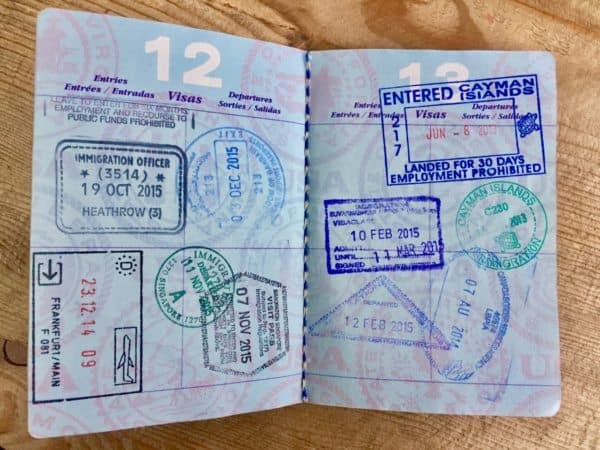Proving who we are used to be a pretty straight-forward affair, or as Popeye the Sailor Man used to say: I am what I am and that’s all that I am. The increasing digitization of our lives, however, doesn’t tolerate this naive attitude any longer.
In meatspace, as they say, we’re all individuals. What an individual actually is, is so fundamental to the human experience that we describe it as just that: “that which can’t be further divided” – an individual. However, the Internet seems not to share this basic human intuition. In Cyberspace there are no individuals, only user accounts, IP addresses, memory slots, and cryptographic keys. In this sense “proving who you are” on the internet makes as much sense as trying to describe the smell of the color yellow. The only thing that can ever be proven is the validity of strings of characters we use as passwords and keys.
Up until a decade ago, this used to be enough. Participation in the digital space was semi-voluntary, with e-mail services and the occasional e-bay account at stake. The absence of the individual from the internet was more of a feature than a bug, which granted us a very welcomed sense of anonymity and freedom. Today, with our financial, public and political lives moving more and more into a digitized mirror world of our own, the absence of the individual is beginning to inflict a pricy toll.
Without individual identity, there are neither individual rights nor accountability – which are the pillars of liberal democracy. We already have lost confidence in election results, news articles, reviews, and the humanity of entities we interact with (click here to prove that you’re not a bot, said the bot to the bot). If we won’t find a way to reintroduce the individual into our digital lives, this annoying reality might morph into outright dystopia.
So how could the internet be redesigned as a space in which actual humans dwell? For this to be possible we need to find a way to represent our identity in digital form. However, this is easier said than done, after all, anything digital can be copied and forged. We used to have the same problem with money. Genuine digital cash was believed to be impossible for this same reason: value can’t be digitalized since eventually, someone will find a way to copy-paste their fortune indefinitely. This is (or was) the “double-spend problem”, and was successfully solved by Satoshi Nakamoto’s and Bitcoin network.
There are a handful of projects out there, utilizing the same logic to solve the identification problem. IBM has an entire department dedicated to this purpose, while Civic has raised $33 Million to provide its own solution. In the meantime, the tight (some might say draconian) Chinese regulatory framework, has pressured some interesting domestic projects to attempt to solve the internet’s identity problem once and for all.
Metaverse, for example, is a smart contract enabled blockchain, akin to Ethereum. However, in contrast to its western counterparts, Metaverse allows (and in some sense, demands), the creation of “Digital Avatars” on its blockchain.
A Digital Avatar is essentially a user’s (or company’s) true identity, tied to the blockchain addresses they own. This works a bit like the Internet’s DNS system: following identification, a string of complicated characters (the user’s public key) is represented as a human-readable address that resembles a domain or an email address. Something like JohnDoe@Metaverse. The verification process itself is signed by “Oracles”, which are trusted institutions such as banks or the government itself.
If you want to create a new token, trade digital assets, receive or send encrypted messages, you need to have an Avatar. This Avatar can then also be used to log-in to your bank account, email service, social media account, and in the future might even allow you to vote from the comfort of your home.
How is this better than a password or “log-in with Gmail”? First of all, given the way blockchains work, you’ll never have to present your private key anywhere in order to log in to these services. “Zero-Knowledge” proofs allow users to prove that they own their key, without ever having to broadcast it, which is very different from how password-based logins work. Secondly, the basis for your Avatar isn’t an account or key, but your actual, real-life identity, as perceived by other humans. If your Avatar’s private key gets stolen, for example, you can return to one of the above mentioned “Oracles”, and recreate it on the basis of your real-world identification.
This way, the decentralization of the blockchain is used to cryptographically secure your identity (since your credentials are not stored on any third party’s server), while the centralized authority of “Oracles” is piggybacked on to validate its authenticity. This union of two opposites also has the neat benefit of allowing for “authorization without identification”. This means that you can prove that you have the right to access a service without disclosing who you are. This especially comes in handy if we want to see e-governance services such as online-voting being further developed.
Such an approach has the potential to reunify our fragmented online lives, and maybe most importantly – it may eventually turn the internet into the safe and accountable space we all desperately need it to be.
Aubrey Hansen is a freelance writer, a graduate of Aarhus University and crypto enthusiast. She writes about blockchain technology, Fintech, and cryptocurrencies. She’s been researching major developments in the crypto world in past couple of years.



